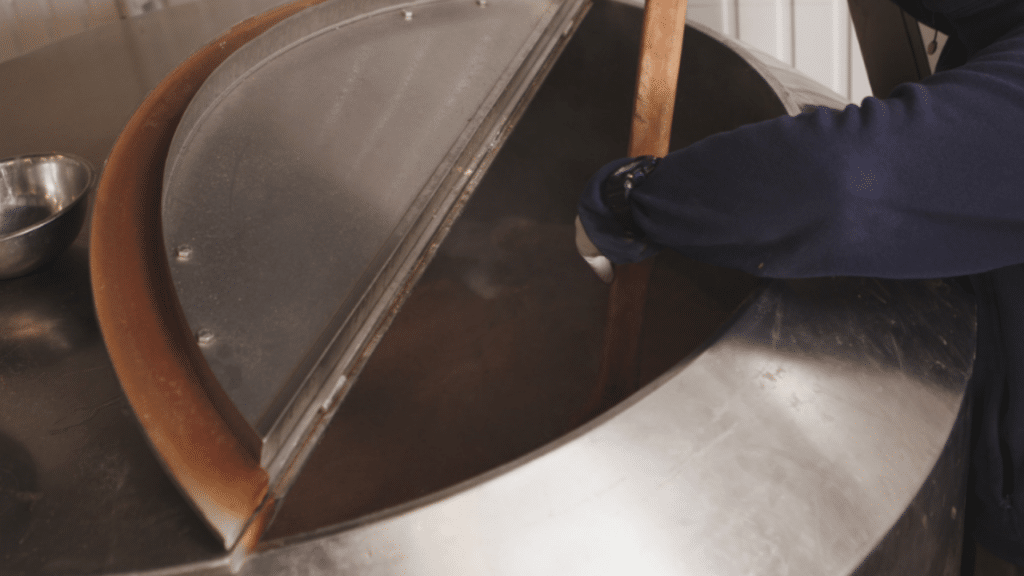

Written by Lenzie Kinyon
The importance of yeast management cannot be stressed enough, especially for craft breweries. The variety and health of the yeast, along with how much yeast is used, all contribute to the unique flavors and aromas that craft brewers hope to produce. Variations in the overall yeast pitching operation not only produce changes in the organoleptic profile of the beers and ales, but may also affect the overall capacity of the fermentation cellar. Some pitching variations could even cause problems for breweries that are recovering their own CO2 from fermentation.
Good yeast management is important for all breweries, from the large national breweries to the very small brew pubs. In this 4-part series, we will cover some key areas of yeast management that are especially important for craft breweries, starting with yeast pitching.
Although craft brewers can use the rule-of-thumb yeast pitching rate of one million yeast cells per milliliter of wort for each degree Plato (1 x 106 cells/ml), some brewers may use slightly different rates. Lager beers, which usually are fermented at lower temperatures than ales, may be pitched with more yeast to compensate for the cooler temperatures. Pitching rates around 1.25 x 106 cells/ml per degree Plato are common for lagers. Ales, which typically have higher fermentation temperatures, may have lower pitching targets. Because yeast cells are more active at warmer temperatures, rates around 0.75 x 106 cells/ml per degree Plato usually are sufficient. Also, brews with higher gravities often are pitched with more yeast due to the greater amount of sugars that must be fermented. Sometimes, multi-brew fermenters are pitched differently from single-brew fermenters, as the yeast has more time to acclimate during the longer filling times with multi-brew fermenters.
As long as the proper wort attenuation can be achieved in a reasonable amount of time, the actual pitching rate is less important than consistent yeast pitching. If the brewing ingredients, and/or the brewing procedures, vary from brew to brew, or from fermenter to fermenter, the end flavors and aromas may also vary. Product consistency is important for all breweries, but consistency is essential for any brewery that markets only one or two products that account for much of their volume. As time passes, customers who drink these products expect them always to taste exactly the same. When it comes to a favorite beer or ale, change is not a good thing for most drinkers, especially if the changes come and go randomly.
When a fermenter is unintentionally pitched with a low yeast concentration, fermentation proceeds slower than normal, as more cell growth must take place. Undesirable products like diacetyl, fusel alcohols, and sulfur compounds may be produced. At times, attenuation may slow, or even stop, before all of the sugars have been fermented. These “hung fermenters” not only may develop some off characteristics, but small breweries with limited fermentation capacity may then have scheduling problems, due to the delayed fermentation caused by under pitching.
Under pitching also increases the risk of bacterial contamination. During the extended lag time before the yeast can multiply enough to out-compete any bacterial growth, the wort may become infected and develop off flavors or aromas. Bacteria are the fastest reproducing organisms in the world, with some that are capable of doubling every 4-20 minutes. Consider what might happen if under pitching caused an extra 6-hour delay before the yeast concentration increased enough to out-compete bacterial growth. If the wort started with just a single bacterium that doubled every 20 minutes, at the end of 6 hours this one bacterium would then number more than 2.6 million!
Since a low pitching rate almost certainly will result in a slower start of fermentation, the CO2 gas from that fermenter will not be pure enough to collect at the normal time. Unless the brewery is using at least one other parameter to indicate when to place the fermenter on collect, moving this tank from CO2 vent to CO2 collect, on schedule, will send high-oxygen gas to the recovery system, causing it to shut down. If other fermenters are already on collect when the recovery system stops, the CO2 losses could be significant.
Problems also arise when too much yeast is pitched. Fermentation becomes overly vigorous, creating a thick foam head that soon overflows into the bung line. Over-foaming fermenters cannot be placed on CO2 collect, so much of the gas produced from this fermenter will be lost. Because foam is really beer, foamers also contribute to unwanted beer loss.
Since hop compounds preferentially bind to foam, the beer from a fermenter that foams over will have a lower bitterness value and less hop aroma. When craft breweries are unable to do significant blending prior to their beers and ales reaching the customer, this variation in bitterness from one over-foaming fermenter to the next might be noticeable to loyal drinkers, who expect the same hop character all of the time.
Because over pitching leads to a more rapid fermentation, CO2 from the headspace of an over-pitched tank will be ready to collect earlier than normal. If time is one of the parameters used for putting tanks on collect, some CO2 will be lost due to the quicker fermentation.
Over pitching may also produce a yeasty character, especially if the yeast is not removed soon after fermentation is complete. Once the yeast flocculates and settles, the deeper the yeast in the fermenter cone, the more likely some yeast will undergo autolysis and release undesirable compounds.
Yeast vendors generally provide guidelines for their dry or wet yeast products, which should be a good approximation for pitching. Still, performing cell counts is the only way to reliably be sure that target pitching rates are being met. For breweries that normally harvest their own yeast, cell counts should always be done to determine what volume of yeast slurry to re-pitch. Several things affect yeast harvesting, which could lead to a thick slurry with a very high cell count, or a slurry that contains a lot of beer and a much lower number of yeast cells.
Yeast cells are visible with a magnification of 200x, but checking cell counts will be easier and more accurate with a microscope capable of 400x magnification. Good-quality microscopes capable of this are available for $500 or less. Even better microscopes, capable of up to 1,000x magnification, can be purchased for less than $1,000. As we will discuss in Part Two of this series, the same microscope can be used for other examinations by craft breweries.
In addition to a microscope and some simple laboratory volumetric glassware, the only equipment needed for counting yeast cells is a simple hemocytometer, which can be purchased for around $50. Often called a “cell counting” slide, a hemocytometer is a thick glass slide with a rectangular indentation that holds a precise volume when a cover glass is placed over the indented area. A drop of diluted yeast is placed on the indented area, and the yeast cells that are visible in a certain number of the small grid areas are counted by looking through the microscope. Using the dilution amount and the specific hemocytometer factor, the number of yeast cells per milliliter can easily be calculated.
To summarize, as long as yeast pitching rates are reasonable for what is being brewed, and how it is being brewed, the most important yeast pitching goal for craft brewers is consistency – not too much, not too little, just the same amount of yeast every time.

VISIT BOOT #225 TO SEE THE DALUM CO2 RECOVERY UNIT IN PERSON
CBC, April 22nd-24th, 2024
DALUM is going to the Craft Brewers Conference in Las Vegas! Be sure to stop by booth #225 to learn about the DALUM CO2 Recovery Unit. Our innovative technology is meticulously engineered for craft breweries to gain CO2 independence, while improving sustainable brewing operations.
Meet Jan Paul and Paul Graham, both seasoned brewers with firsthand experience in CO2 recovery, and engage with our team to gain insights and have all your questions regarding CO2 recapture addressed. We look forward to connecting with you!
© 2024 Dalum Equipment